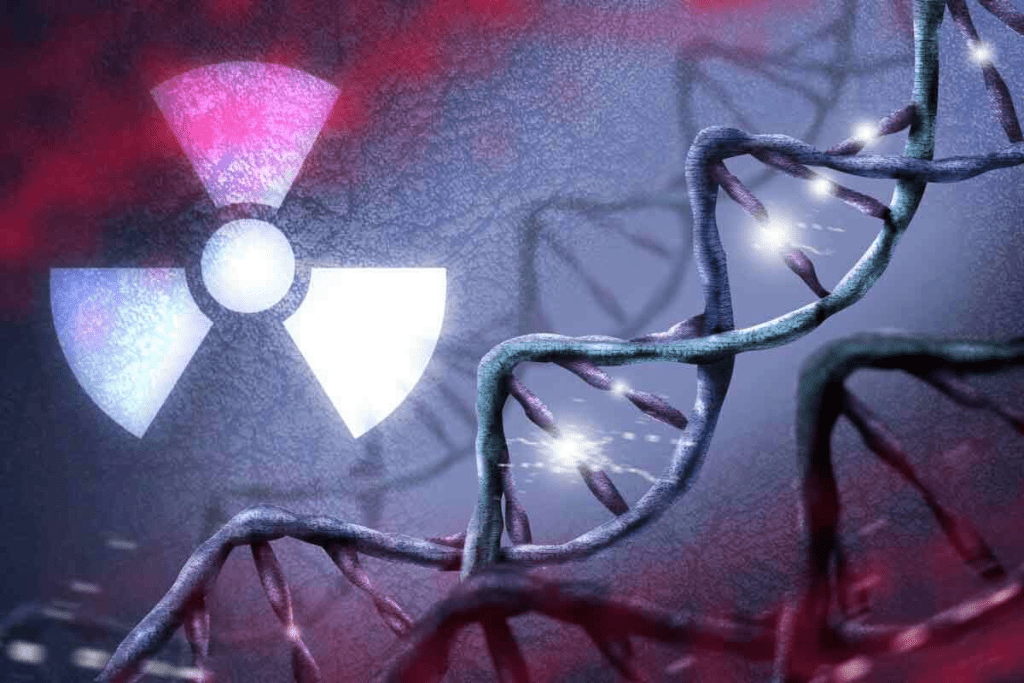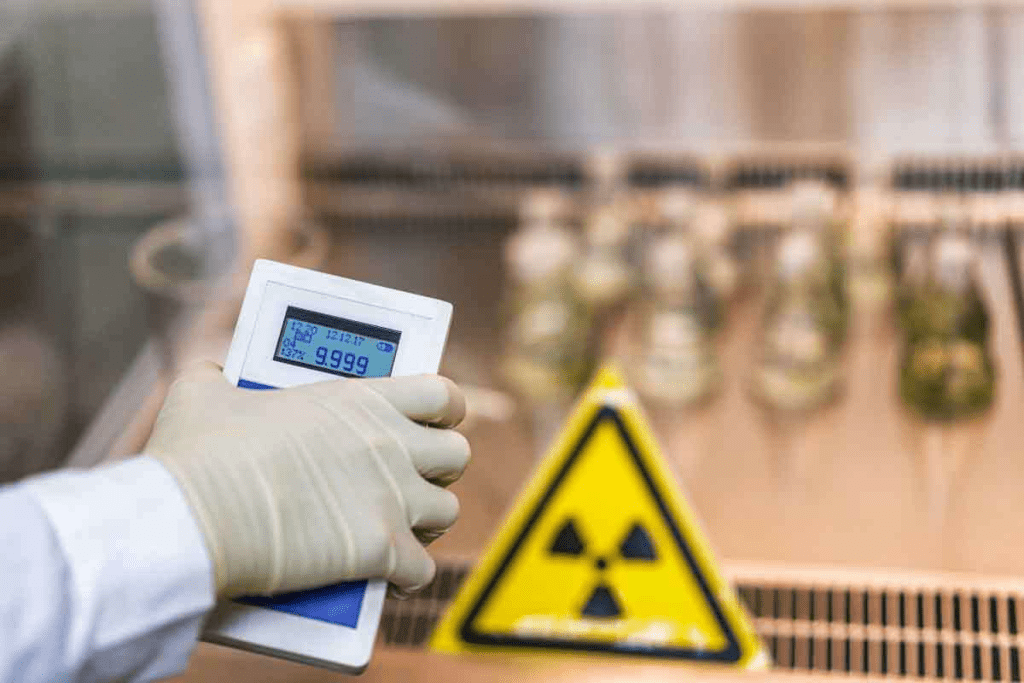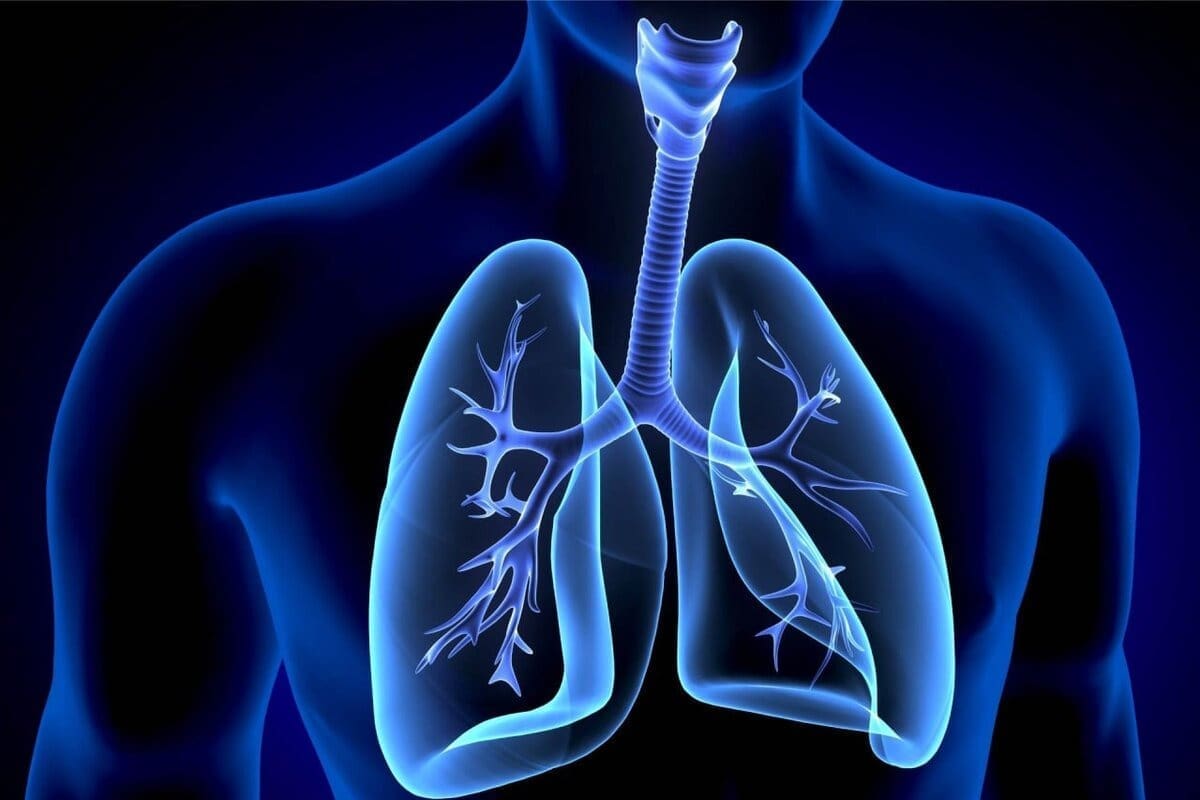Last Updated on November 27, 2025 by Bilal Hasdemir

Radiation has been around forever, filling our world in many ways.
By scientific definition, radiation is the release of energy as waves or particles. This comes from things like radioactive materials, cosmic rays, or medical tools. Many people ask what does radiation do, and it can interact with matter by transferring energy, which can be useful in medical imaging or treatments but also harmful in high doses.
The United States Environmental Protection Agency (US EPA) says radiation is energy released as waves or streams of particles. At Liv Hospital, we understand how vital it is to grasp radiation. This knowledge helps us ensure safer healthcare and drive innovation.
Key Takeaways
- Radiation is a natural phenomenon present from the start of time.
- It’s defined as the emission or transmission of energy as waves or particles.
- Sources of radiation include radioactive materials, cosmic rays, and medical devices.
- Understanding radiation is key to safer healthcare and innovation.
- Liv Hospital is dedicated to caring with knowledge and compassion in all aspects of radiation use and safety.
The Scientific Definition of Radiation

The term ‘radiation’ means the release or spread of energy as waves or particles. Science covers many areas, like electromagnetic waves and high-energy particles. We’ll look at how scientists define and study radiation.
Energy Transmission Through Waves and Particles
Radiation is energy moving, either at the speed of light or slower, but faster than heat. This is explained by Britannica. It can travel as electromagnetic waves or as particles like alpha and beta.
Electromagnetic waves have frequency and wavelength, showing their energy and place in the spectrum. Particulate radiation, on the other hand, comes from high-energy particles in nuclei or during nuclear reactions.
Historical Evolution of Radiation Concepts
Our understanding of radiation has grown a lot over time. It started with Wilhelm Conrad Röntgen’s discovery of X-rays in 1895. Then, Henri Becquerel found radioactivity in 1896.
These findings helped us learn about different types of radiation. Later, quantum mechanics and nuclear physics showed radiation’s wave and particle sides.
Now, knowing about radiation is key in medicine, nuclear energy, and space studies. We keep learning and using radiation to improve our science and technology.
Understanding Radiation Energy in Scientific Terms

Radiation energy is complex, with both ionizing and non-ionizing types. It’s the energy sent through waves or particles. This energy is key in science.
How Radiation Energy Is Measured
Radiation energy is measured in different ways. For ionizing radiation, we look at the absorbed dose. This tells us how much energy is in a certain amount of tissue.
The Gray (Gy) is the SI unit for this. It’s 1 joule of energy per kilogram of matter. The Sievert (Sv) also matters, as it shows how radiation affects living things.
Non-ionizing radiation is measured differently. We look at its intensity or power density. For example, microwaves and radio waves are measured in watts per square meter (W/m ²).
The Relationship Between Wavelength and Energy
The energy of radiation goes up as its wavelength goes down. This is shown by the equation E = hc/λ. Here, E is energy, h is Planck’s constant, c is the speed of light, and λ is wavelength.
Ionizing radiation has high energy and short wavelengths. It includes X-rays and gamma rays, with wavelengths under 100 nanometers.
“The energy of radiation is a critical factor in determining its interaction with matter, with higher energy radiation being more capable of causing ionization and potentially damaging living tissues.”
Non-ionizing radiation has longer wavelengths and lower energies. It includes radio waves, microwaves, and visible light. Knowing this helps us understand how different radiations affect life and the environment.
Types of Radiation in Scientific Context
It’s important to know about the different types of radiation. This knowledge helps us understand their effects and uses. Radiation falls into two main types: electromagnetic and particulate.
Electromagnetic Radiation Spectrum
Electromagnetic radiation includes many energy types. These are radio waves, microwaves, infrared rays, visible light, ultraviolet rays, X-rays, and gamma rays. Each type has its own wavelength and frequency, which affect its energy and uses.
The electromagnetic spectrum shows all these energy types. It ranges from low-energy radio waves to high-energy gamma rays. This spectrum is key for many technologies and medical uses.
| Radiation Type | Wavelength | Frequency | Energy Level |
| Radio Waves | Long | Low | Low |
| Microwaves | Medium | Medium | Medium |
| Gamma Rays | Short | High | High |
Particulate Radiation Forms
Particulate radiation includes high-energy particles like alpha, beta, and neutron radiation. These particles come from an atom’s nucleus during certain radioactive decay.
Alpha particles are high-energy helium nuclei. They can be stopped by a sheet of paper or human skin. Beta particles are high-energy electrons. They can travel several meters in the air and need a thin layer of metal to stop them. Neutron radiation is made of free neutrons from nuclear reactions.
Knowing the difference between electromagnetic and particulate radiation is vital. It helps us use radiation safely and effectively in fields like medicine and energy production.
Ionizing vs. Non-Ionizing Radiation
Ionizing and non-ionizing radiation are two types of radiation with different energies. They interact with matter in unique ways. Knowing how they affect living things and the environment is key.
Characteristics of Ionizing Radiation
Ionizing radiation has enough energy to remove electrons from atoms, creating ions. This includes alpha particles, beta particles, gamma rays, and X-rays. Ionizing radiation can damage DNA and raise cancer risks, the US EPA warns. It can change DNA, leading to mutations and health problems.
“Ionizing radiation is a big worry because it can harm living cells,” experts say. Its effects are studied in nuclear medicine and radiation safety.
Properties of Non-Ionizing Radiation
Non-ionizing radiation has lower energy and can’t ionize atoms. It includes radio waves, microwaves, infrared, and visible light. Non-ionizing radiation is usually safe because it doesn’t damage DNA like ionizing radiation does. But high levels can cause heating and harm tissues.
Things like microwave ovens, Wi-Fi routers, and sunlight are non-ionizing radiation sources. Their energy is not strong enough to ionize, but knowing their safety limits is important for health.
Both ionizing and non-ionizing radiation are important in our lives and medicine. By understanding their effects, we can use them safely and wisely.
Where Does Radiation Come From? Natural Sources
Radiation is everywhere, coming from many natural sources around us. It’s important to know where it comes from to understand its role in our world.
We get exposed to radiation every day. It comes from space and the Earth itself. Knowing where it comes from helps us understand its effects.
Cosmic Radiation from Space
Cosmic radiation comes from outside our atmosphere, from the sun and deep space. It includes high-energy particles like protons and atomic nuclei. Cosmic radiation is a big part of the background radiation on Earth, changing with solar activity and the Earth’s magnetic field.
The Earth’s atmosphere helps block cosmic radiation, but it’s not perfect. At high altitudes, like during flights or in mountains, we get more exposed. This is a big concern for people who fly a lot or live in high places.
Terrestrial Radiation Sources
Terrestrial radiation comes from the Earth’s crust, mainly from uranium and thorium decay. These elements are in soil, rocks, and building materials. The amount of terrestrial radiation varies by location, based on the local geology. Places with more uranium and thorium in the soil have higher radiation levels.
- Granite areas have more terrestrial radiation because of uranium.
- Materials like granite, brick, and concrete also add to indoor radiation.
Radon Gas and Environmental Exposure
Radon is a radioactive gas from the ground, more in areas with lots of uranium. It builds up in places like homes and buildings, posing health risks. Radon exposure is a big worry because of its link to lung cancer.
To lower radon risks, we can improve air flow in homes and use special building materials. It’s important to spread the word and test for radon.
In summary, radiation comes from many natural sources, like cosmic, terrestrial, and radon. Knowing these sources helps us manage our radiation exposure.
Human-Made Radiation Sources and Applications
Technology has brought us many human-made radiation sources. These have changed how we do medicine and industry. We use them for many good things, like checking our health and generating energy.
Medical Imaging and Therapeutic Devices
Medical imaging devices are key human-made radiation sources. They include X-ray machines, CT scanners, and PET scanners. These tools help doctors find and treat health problems.
Radiation therapy is also important. It uses radiation to kill cancer cells. This helps treat cancer effectively.
A study in the Journal of Clinical Oncology found that about 50% of cancer patients get radiation therapy. It’s a vital part of cancer treatment.
“Radiation therapy is a highly effective treatment modality for many types of cancer, providing cure, palliation, or symptom control.”
Nuclear Power Generation
Nuclear power plants make electricity from nuclear reactions. They use reactors with fuel rods that split atoms. This heat makes steam, which turns turbines to create electricity.
| Nuclear Reactor Type | Fuel Used | Coolant Used |
| Pressurized Water Reactor (PWR) | Enriched Uranium | Water |
| Boiling Water Reactor (BWR) | Enriched Uranium | Water |
| Gas-cooled Reactor | Natural Uranium | Carbon Dioxide |
Consumer Products and Technologies
Many consumer products have tiny amounts of radioactive materials. Smoke detectors, for example, use Americium-241 to detect smoke. Other items include certain watches and exit signs.
- Smoke detectors
- Luminescent watches
- Exit signs
- Certain industrial gauges
These products are safe for us to use. They don’t expose us to much radiation.
What Does Radiation Do to Living Organisms?
It’s important to know how radiation affects living cells. This knowledge helps us understand its dangers and benefits. Radiation can harm or help living things, depending on the type and amount.
Cellular and DNA Interactions
Ionizing radiation can remove electrons from atoms, creating ions. This can damage DNA in cells. This damage might cause mutations or kill cells.
When ionizing radiation hits DNA, it can break DNA strands. If these breaks aren’t fixed, they can lead to genetic problems or chromosomal issues.
Acute vs. Chronic Radiation Effects
Radiation exposure can be either acute or chronic. Acute exposure means a high dose in a short time. Chronic exposure means lower doses over a longer time.
Acute radiation syndrome (ARS) happens after a high dose of radiation quickly. Symptoms can be mild or severe, even leading to death.
The Dual Nature: Damage and Therapeutic Benefits
Radiation can harm by damaging DNA and possibly causing cancer. Yet, it’s also used in medicine. Radiation therapy kills cancer cells or slows their growth.
Research shows radiation’s double role: it can damage cells and cause disease. But it also helps in cancer treatments, saving lives. This shows why managing radiation is so important.
| Type of Radiation Exposure | Characteristics | Effects on Living Organisms |
| Acute Exposure | High dose, short duration | Can cause acute radiation syndrome (ARS), potentially leading to severe health effects or death |
| Chronic Exposure | Lower doses, extended duration | May increase the risk of cancer and genetic mutations over time |
Medical Applications: Harnessing Radiation for Health
Radiation in medicine has changed healthcare a lot. It has opened new ways to care for patients. We’ve seen big steps forward in how radiation helps diagnose and treat diseases.
Diagnostic Imaging Technologies
Diagnostic imaging is key in today’s medicine. Tools like X-rays, CT scans, and PET scans use radiation to show what’s inside our bodies. These tools help doctors find and understand many health issues, from broken bones to cancer.
Key Diagnostic Imaging Technologies:
- X-rays: Good for seeing bones and finding breaks or misalignments.
- CT Scans: Show cross-sections and are great for soft tissue problems.
- PET Scans: Show how active body tissues are, key for cancer diagnosis and planning.
Radiation Therapy for Cancer Treatment
Radiation therapy is a big part of fighting cancer. It kills cancer cells or slows them down. It can be used alone or with other treatments like surgery and chemotherapy. Thanks to new tech, radiation therapy is more precise and has fewer side effects.
| Type of Radiation Therapy | Description | Application |
| External Beam Radiation Therapy (EBRT) | Delivers radiation from outside the body | Commonly used for various types of cancer |
| Brachytherapy | Involves placing radioactive material inside the body | Used for treating cancers in specific areas, like the prostate |
| Stereotactic Body Radiation Therapy (SBRT) | Delivers high doses of radiation precisely to tumors | Ideal for treating small, well-defined tumors |
Liv Hospital’s Approach to Radiation Medicine
At Liv Hospital, we aim for the best in patient care. We use the latest in radiation medicine for personalized treatment. We focus on accurate diagnosis and effective treatment to give our patients the best care.
Our dedication to radiation medicine shows in our modern facilities and our team’s commitment to medical innovation.
Conclusion: The Future of Radiation in Science and Medicine
Radiation is a complex topic with both natural and human-made sources. It’s important to understand radiation and its effects on living things. This knowledge helps us use it for good in medicine.
The basics of radiation show us its different types, like alpha, beta, and gamma. Each type has its own way of working and how we detect it. The future of radiation in science and medicine looks very promising, with big hopes for better imaging and cancer treatments.
New technology in radiation is making treatments more precise and effective. This leads to better results for patients. As we learn more about how radiation interacts with our bodies, we’ll see even more new uses in medicine.
By keeping up the research on radiation, we can find new ways to help people get healthier. The future of radiation in science and medicine is exciting, with many discoveries waiting to be made.
FAQ
What is radiation?
Radiation is a form of energy that travels through waves or particles. It has been around forever.
What are the different types of radiation?
There are two main types. Electromagnetic radiation includes radio waves, X-rays, and gamma rays. Particulate radiation includes alpha and beta particles.
What is the difference between ionizing and non-ionizing radiation?
Ionizing radiation can remove electrons from atoms, creating ions. Non-ionizing radiation has less energy and doesn’t do this.
Where does radiation come from?
It comes from natural and human-made sources. Natural sources include cosmic and terrestrial radiation. Human-made sources include medical devices and nuclear plants.
What are the effects of radiation on living organisms?
Radiation can damage cells and DNA. This can cause harm or have medical benefits.
How is radiation used in medicine?
It’s used in imaging, like X-rays and CT scans. It’s also used in cancer treatment. Liv Hospital focuses on top-notch radiation medicine.
What is the relationship between wavelength and energy in radiation?
Shorter wavelengths have more energy. Longer wavelengths have less energy.
How is radiation energy measured?
It’s measured in grays (Gy) and sieverts (Sv). These units consider how radiation affects living things.
What are some examples of ionizing radiation?
Ionizing radiation includes alpha and beta particles, X-rays, and gamma rays. These can damage living tissues.
What are some examples of non-ionizing radiation?
Non-ionizing radiation includes radio waves, microwaves, and visible light. These don’t ionize atoms and have lower energy.
References
- Science Learning Hub. (2025, September 25). Radiation. https://www.sciencelearn.org.nz/resources/998-radiation






